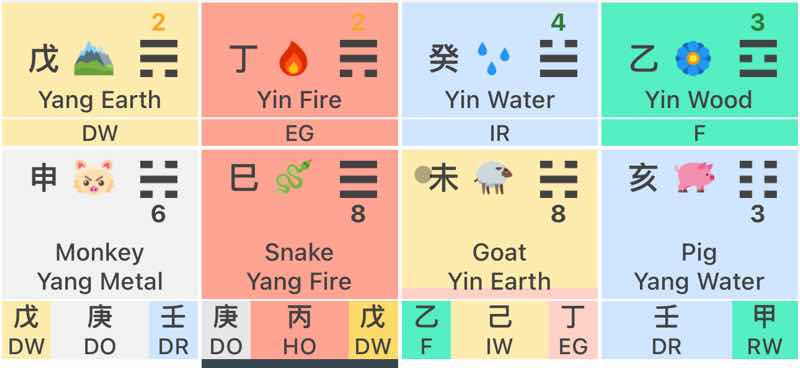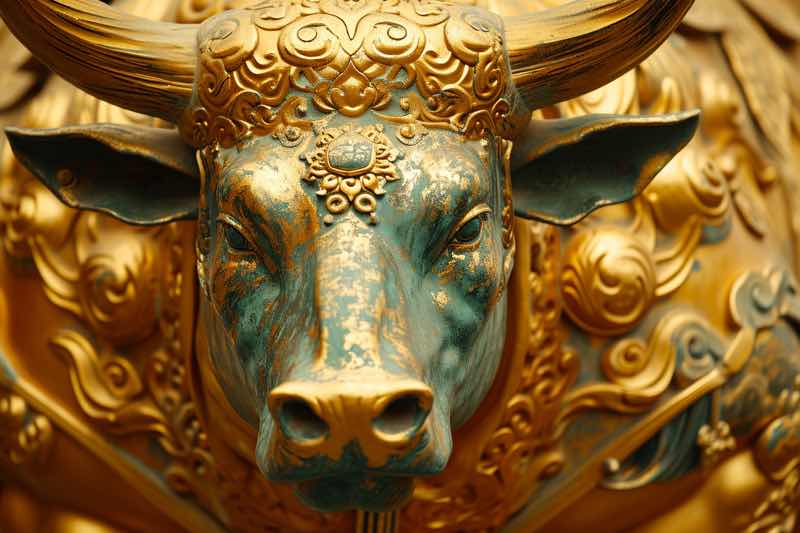BaZi 101 - Reading and Interpreting Someone's BaZi

Introduction to BaZi
BaZi (pronounced: pa tze), also known as the Four Pillars of Destiny, or the Eight Characters, is an ancient Chinese astrological system deeply rooted in Taoist philosophy. When Feng Shui is the power to change the fate of the earth, then BaZi is the power to change the fate of the heavens. It is not just a form of fortune telling; rather, it is a sophisticated method of understanding one's character, life choices, and destiny. Originating over a thousand years ago, BaZi has played an important role in Chinese culture, offering insights into personal attributes, future events, and life decisions.
Key Takeaways
- More than Just Divination: BaZi is a profound Chinese astrology system rooted in Taoist philosophy, used not only for fortune telling but also for self-understanding.
- History and Culture: Originating in the Tang Dynasty, BaZi is an important part of China's cultural heritage, used by the elite and later spread throughout society.
- BaZi Basic Concept: BaZi combines the elements of wood, fire, earth, metal, and water with the energies of Yin and Yang, providing great insight into one's life.
- BaZi Chart as Cosmic Blueprint: The BaZi Chart, created based on the date and time of birth, serves as a unique blueprint that reveals various aspects of personality and life potential.
- Tool for Self-Awareness and Decision Making: BaZi is not only a tool to predict the future but also to understand oneself and help in making the right decisions.
- Application of BaZi in Daily Life: BaZi can be used to deepen understanding of interpersonal relationships, career potential, health and financial aspects.
Understanding BaZi

Understanding the Essence of BaZi
BaZi revolves around the concept of the five elements (Wood, Fire, Earth, Metal, Water) and their interaction with Yin and Yang energies. These elements, combined with data from the date and time of one's birth, form a unique BaZi chart or birth chart.
This chart is a personal cosmic blueprint that offers deep insights into one's life. Understanding BaZi goes beyond mere prediction; it involves understanding the fundamental elements that influence the strengths, weaknesses and potential of one's life path.
Historical Roots and Cultural Significance
The practice of BaZi dates back to the Tang Dynasty, reflecting China's rich astrological heritage. It was originally used by royalty and the elite for guidance in important decisions. Over time, it became more accessible to the general public, evolving into a tool for self-discovery and decision-making.
In contemporary times, BaZi is not only significant in Chinese culture but has also gained international recognition for its accuracy and depth in personality analysis and divination.
Understanding BaZi is like having a roadmap of one's life. It provides clarity on the personal journey, offering insights into various aspects of life such as relationships, career, health and wealth.
By tapping into this rich wisdom, individuals can unlock a deeper understanding of their internal mechanisms and make more informed choices about their future.

BaZi Basics
BaZi is a complex and knowledge-rich practice, which requires a deep understanding of its core components. In this section, we will explore the basics, providing a solid foundation for understanding how the system works.
Core Components of BaZi Analysis
BaZi analysis centers on four main pillars: year, month, day and hour. Each pillar consists of two parts: the celestial rod and the earth branch. The celestial rod depicts Yin or Yang elements and energies, while the earth branch is related to the Chinese zodiac. The combination of these rods and branches reveals the dynamics of one's life, including strengths, challenges, and opportunities.
The role of the Chinese Zodiac in BaZi
The Chinese zodiac plays an important role in BaZi. Each zodiac sign, represented by a specific animal, carries unique characteristics that affect its interpretation. For example, someone born in the year of the Rat may have an intelligent and adaptive nature, while those born in the year of the Dragon may exhibit courage and ambition. Understanding these characteristics can help in interpreting the BaZi chart more accurately.
The Importance of Knowing BaZi Basics
Understanding the basics of BaZi is essential before stepping into more in-depth analysis. By knowing the core components and how they interact, one can begin to understand the deeper meaning of their graph. This is the first step on the journey to understanding BaZi and how it can be applied in everyday life.

Anatomy of a BaZi Graph
Reading and understanding the BaZi chart is key to interpreting its meaning. It consists of several interacting elements, creating a unique and complex life roadmap.
Understanding the Four Pillars
The four pillars of BaZi, which include the year, month, day and hour of birth, are the foundation of the BaZi chart. Each pillar consists of a Sky Rod and an Earth Branch, which represent the zodiac element and animal respectively. For example, the year pillar may indicate a Rabbit year associated with the Wood element. Each pillar provides insights into different aspects of life, such as personality, career, relationships and more.
Main Components of BaZi Graph
- Sky Rod (Heavenly Stems): Indicates Yin or Yang elements and energies. It provides information about one's personal characteristics and natural inclinations.
- Earth Branch (Earthly Branch): Connecting with Chinese zodiac animals, provides additional insights into personality and destiny.
- Element Interaction: The way the elements in the BaZi graph interact plays an important role in determining the dynamics of one's life.
Reading the BaZi Graph
To read the BaZi chart, first, identify the Sky Rod and Earth Branch of each pillar. Then, analyze how these elements interact and influence each other. This understanding helps interpret the strengths, weaknesses, opportunities and challenges in one's life.
Exploring the Five Stars
The 5 elements will then be known by different names depending on the Day Master someone.
The Five Stars in BaZi refer to certain stars that appear in the Earth Branch and have special influence, such as the wealth star, power star, resource star, friendship star, and spending star.
Analyzing the Ten Gods
In BaZi, the 10 Gods are not gods in the literal sense, but representations of the relationship between the Sky Rod on the day pillar (personal pillar) and the other elements in the chart.
They include: Friend, Rob Wealth, Eating God, Hurting Officer, Direct Resource, Indirect Resource, Direct Wealth, Indirect Wealth, Direct Officer, and Seven Killings.
Each of these 'Gods' provides insights into certain aspects of one's life, such as financial potential, personal traits, and interpersonal relationships.
Deep Reading
Interpreting a BaZi chart requires a deep understanding of BaZi principles and often requires guidance from an expert. However, with basic knowledge and practice, one can begin to understand key aspects of their own chart and how it reflects their life.
Understanding the BaZi chart opens the door to deeper introspection and a better understanding of one's life path. It can be an invaluable tool for personal growth and more conscious decision-making.

Five Elements in BaZi
In BaZi, the concept of the Five Elements - Wood, Fire, Earth, Metal and Water - plays an important role. These elements not only symbolize the physical aspects of nature, but also represent various characteristics and interactions in one's life.
Five Elements Interaction
- Wood: Symbolizes growth and creativity. Interacts with other elements to reflect flexibility or tension in personality.
- Fire: Represents energy, passion, and courage. Its relationship with other elements can show the power of motivation and ambition.
- Earth: Relates to stability and realism. Its interaction with other elements reveals how sturdy or adaptive one is to change.
- Metal: It signifies decisiveness and intellectual acumen. Its combination with other elements indicates strength of will and consistency.
- Water: Symbolizes wisdom and flexibility. Its relationship with other elements reflects adaptability and emotional depth.
Balance of Elements for Harmony
The balance between the five elements in BaZi graph is the key to achieving harmony in life. Imbalances may indicate areas that need attention or development. For example, an excess of the Fire element may indicate a tendency to be aggressive or rash, while a deficiency may indicate a need for more motivation or passion.
Applying the Understanding of Elements in Daily Life
Understanding how these elements interact in a BaZi chart helps one to better understand certain aspects of their character and life. This allows one to identify potential areas for growth and self-development.

Twelve Animal Signs and Their Effect on BaZi
The BaZi system utilizes the twelve animal signs of the Chinese zodiac, where each sign has unique characteristics that exert a significant influence on one's BaZi interpretation.
Characteristics of Each Zodiac Sign
- Rat: Ingenuity, adaptability, creativity.
- Buffalo: Reliability, strength, perseverance.
- Tiger: Courage, independence, strength.
- Rabbit: Gentleness, diplomacy, caution.
- Dragon: Charisma, courage, luck.
- Snake: Intelligence, mysterious, intuition.
- Horse: Energy, freedom, optimism.
- Goat: Creativity, patience, calmness.
- Monkey: Ingenuity, playfulness, adaptability.
- Chicken: Confidence, practicality, thoroughness.
- Dog: Loyalty, honesty, kindness.
- Pig: Luck, happiness, generosity.
The Influence of Animal Marks on Personality
Each zodiac sign has a different influence on an individual's nature and behavior. For example, someone born in the year of the Rat may have an intelligent and adaptable nature, while those born in the year of the Dragon may show great courage and ambition.
Zodiac Integration in BaZi Analysis
In BaZi analysis, understanding how these signs interact with other elements in the BaZi chart is very important. This provides additional insights into one's destiny, including in the aspects of career, love life and interpersonal relationships.
Understanding the twelve animal signs in BaZi is key to thoroughly interpreting one's nature and potential.

Yin and Yang: Duality in BaZi
Concept Yin and Yang is an important aspect of BaZi, reflecting the duality and balance that exists within the universe and within the individual.
Definition of Yin and Yang
Yin and Yang are two opposing yet complementary forces. Yin symbolizes a more passive, soft, and reflective nature, while Yang symbolizes active, strong, and expansive energy. In BaZi, each element and pillar can be classified as either Yin or Yang, creating a dynamic balance in one's chart.
Yin and Yang application in BaZi
In a BaZi reading, the balance between Yin and Yang in a person's chart is key to understanding various aspects of his or her life. For example, an excess of Yin elements may indicate the need for more Yang energy to achieve balance, such as increasing activity or courage in decision-making.
Yin Yang and the Five Elements
The interaction between Yin and Yang also plays an important role in the relationship between the five elements. For example, Yang Fire can encourage the growth of Yin Wood, while Yin Water can help calm excessive Yang Fire.
A Deep Understanding of Life Through Yin and Yang
Understanding how Yin and Yang operate in a person's BaZi chart provides deeper insights into how they interact with the world, overcome challenges, and pursue their goals. It is a powerful tool for introspection and personal growth.

BaZi and Personal Relationships
Understand the dynamics personal relationships through the lens of BaZi can provide valuable insights that enable individuals to establish and maintain more harmonious and satisfying relationships.
Compatibility Analysis in BaZi
- Basic Principles: Compatibility in BaZi is based on the interaction between elements and zodiac signs in the charts of two or more people. This gives an idea of how well these individuals can complement each other or potentially conflict.
- Using BaZi for Relationships: BaZi can be used to evaluate the potential of a relationship, be it a friendship, romantic relationship, or work relationship. By understanding the strengths and challenges in a relationship, partners or associates can work to strengthen their bond.
Improving Relationships Through BaZi Insights
- Identify Areas of Growth: BaZi analysis can reveal areas in the relationship that require attention or improvement, such as communication or emotional understanding.
- Overcoming Differences: By understanding each individual's BaZi dynamics, couples or group members can more easily overcome differences and appreciate each other's unique perspectives.
BaZi's Influence on Building Strong Relationships
- Harmonization of Elements and Energies: Understanding how the elements and energies (Yin and Yang) of each individual interact can help create balance and harmony in relationships.
- The Importance of Timing in Relationships: BaZi can also provide insight into good timing for starting or improving relationships, based on favorable energy cycles.
Learning and applying BaZi principles in personal relationships not only opens the door to a deeper understanding of oneself and others, but also helps create more fulfilling and harmonious relationships.

Career and Wealth Aspects in BaZi
BaZi provides a valuable tool for understand and optimize career aspects and wealth in one's life, assisting in making decisions which is more Right and useful.
Identifying Career Potential
- Understanding Natural Talents and Inclinations: BaZi charts can reveal a person's natural inclinations, talents and abilities which can guide them in choosing the most suitable career.
- The Right Time for a Career Change: BaZi can also help determine the right time to make a career change, such as when to look for new opportunities or start your own business.
Financial Forecast and BaZi
- Financial Opportunities: BaZi can provide clues about favorable time periods or financial challenges one may face, aiding in financial planning and decision-making.
- Investment and Money Management Strategies: Through analyzing the elements in the BaZi chart, one can understand investment and financial management strategies that are better suited to their risk profile and potential returns.
Application of BaZi in Business and Entrepreneurship
- Building Strong Teams: BaZi can be used to understand and manage team dynamics, ensuring that team members' strengths and weaknesses complement each other.
- Making Business Decisions: In business, understanding the energy cycles and trends suggested by BaZi can help in making strategic decisions and identifying profitable market opportunities.
BaZi provides invaluable insights in navigating career and financial aspects, helping individuals to reach their full potential and make decisions that support success and prosperity.

BaZi for Health: Using Chinese Astrology for Wellbeing
Although BaZi is better known for personality and fate analysis, it also offers valuable insights on health and well-being. An understanding of the elements and energies in the BaZi chart can help in identifying potential health issues and improving overall well-being.
Identification of Potential Health Problems through Elements
- Dominant Element Analysis: The dominant element in a BaZi chart can indicate a predisposition towards certain types of health problems. For example, the dominance of the Fire element may be related to cardiovascular problems.
- Elemental Balance for Health: Elemental imbalances can cause health problems. For example, a deficiency of the Water element can be related to kidney or reproductive system problems.
Using BaZi for Emotional Wellbeing
- Understanding Emotional Energy: BaZi can reveal how a person's emotional energy can affect their mental and physical health. For example, an excess of Yin energy without enough Yang energy can lead to depression or lethargy.
- Stress Coping Strategies: Knowing how elements and energies interact in one's BaZi chart can help in developing strategies to manage stress and emotions.
Lifestyle and Diet Based on BaZi
- Dietary Advice: BaZi can provide insight into the types of foods that may be most beneficial or detrimental for a person, based on their dominant element.
- Sports and Activity Recommendations: Recommended physical activities can also be customized based on the BaZi analysis, helping in choosing the type of exercise that best suits the individual's energy needs.
The Importance of Routine Health Monitoring
- Proactive in Health: BaZi is not a substitute for professional medical care, but can be used as an additional tool for proactive health monitoring and prevention.
BaZi offers a unique and personalized perspective on understanding and improving physical and mental health. By applying the principles of BaZi, one can develop a more holistic and personalized approach to maintaining their health and well-being.

Applying BaZi in Daily Life
BaZi is not only a tool for deep self-understanding, but also a practical guide that can be applied in various aspects of daily life.
Self-Development
Through understanding BaZi, individuals can identify their personal strengths and weaknesses. This aids in personal development, including improved communication skills, emotion management, and decision-making.
Career and Business Options
BaZi can provide valuable insights into one's potential and natural inclinations, which are very useful in choosing a career path or making business decisions.
Relationship Improvement
By understanding BaZi, both of oneself and others, one can improve interpersonal relationships. This helps in communicating more effectively, understanding and appreciating differences, and building more harmonious relationships.
FAQs
What is BaZi?
BaZi, or the Four Pillars of Destiny, is an ancient Chinese astrology system that uses the date and time of a person's birth to provide deep insights into his or her character, fate and potential.
How can BaZi help in everyday life?
BaZi can help in personal development, relationship understanding, career decision-making and financial planning. It provides a deeper view of one's strengths, weaknesses and potential.
Is BaZi the same as the Chinese zodiac?
BaZi is more complex than the Chinese zodiac. While both use zodiac animals, BaZi also incorporates elements, Yin and Yang, and other concepts to provide a more detailed analysis.
Can BaZi be used to predict the future?
BaZi focuses more on identifying potential and trends rather than making definitive predictions. It provides a framework for understanding what might happen based on current trends.
How to learn BaZi?
Learning BaZi usually starts with understanding the basics, which may include taking courses or reading books on the topic, as well as practice and case studies.
Does it take an expert to read BaZi charts?
While basic knowledge can provide initial insights, more in-depth interpretations often require help from an expert Experienced BaZi due to the complexity of the system.
Can BaZi help with health?
Yes, BaZi can provide insights into health and lifestyle trends that can affect one's physical and emotional well-being.
How long does it take to learn BaZi?
The time required to learn BaZi varies depending on the desired level of depth and individual dedication. It can range from a few months to several years.
Does BaZi apply to everyone, regardless of culture?
Yes, BaZi is based on universal principles that can be applied to anyone, regardless of their cultural background.
How is BaZi different from other forms of astrology?
BaZi is unique in that it incorporates the elements, Yin and Yang energies, and Chinese philosophical principles, making it different from other forms of Western astrology and forecasting systems.

